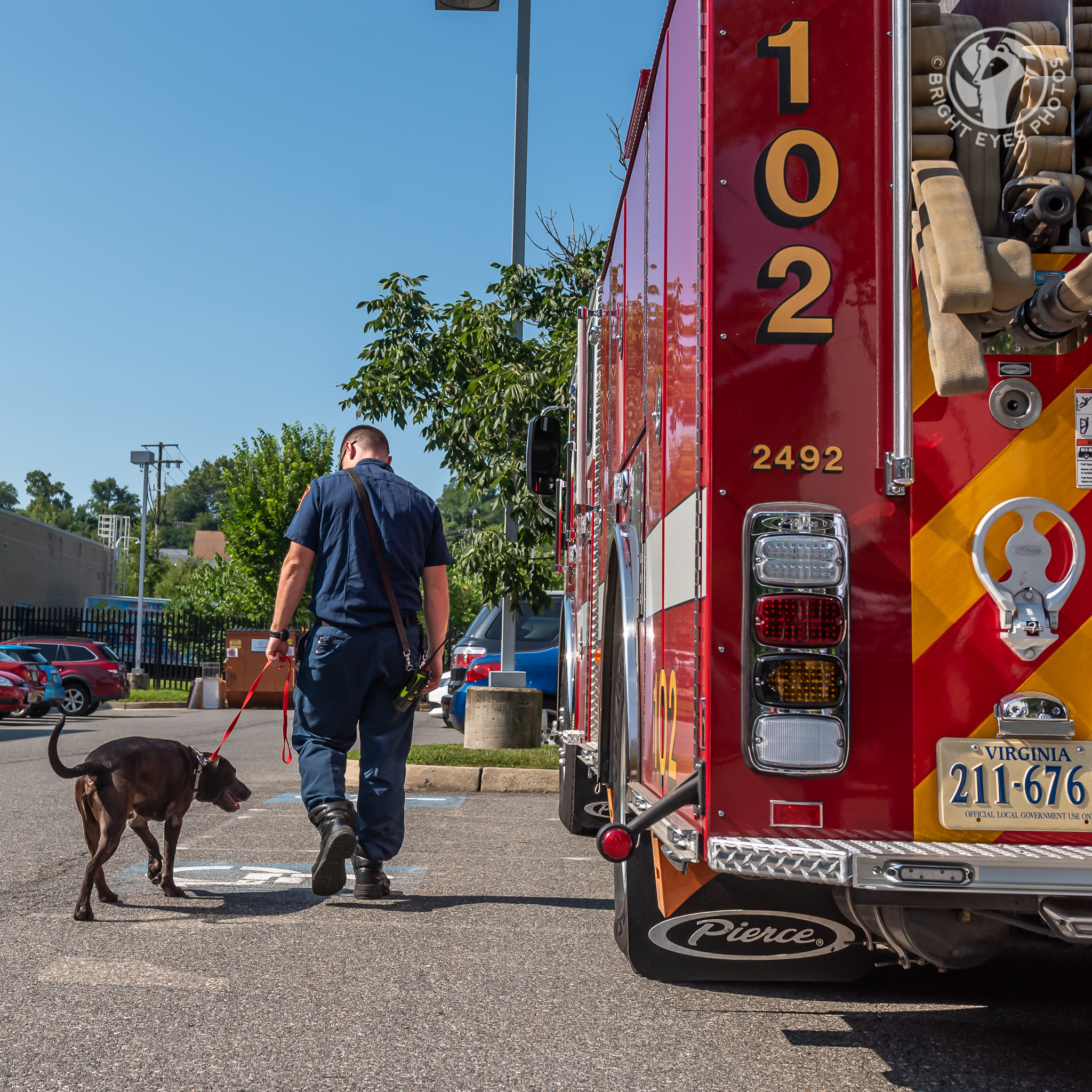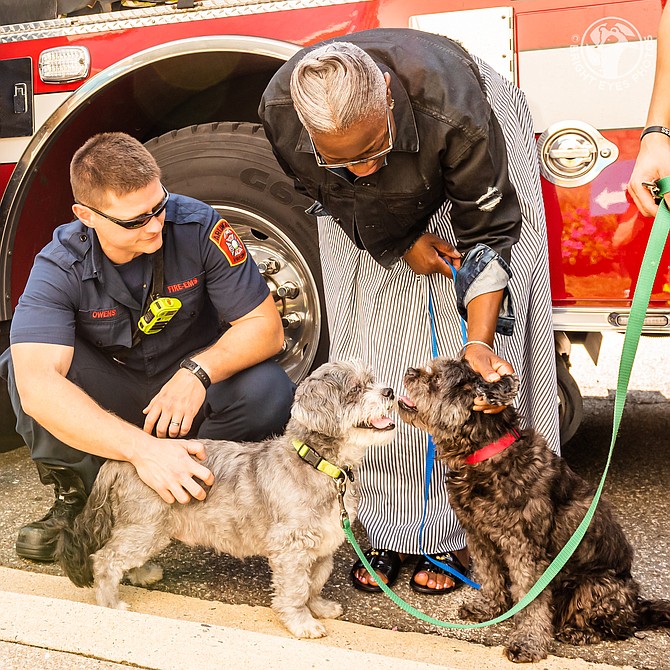The National Fire Protection Association estimates that pets start around 1,000 house fires every year. And, this number could actually be higher, because, as Captain Nathaniel Hiner of the Arlington County Fire Department pointed out, there is often no sure-fire way to conclusively determine whether a pet’s actions cause flames.
Really, it’s not so hard to imagine. For example, how easy would it be for your nimble cat to leap onto the kitchen counter and paw at the knobs on your stovetop?
Or, can you say with certainty that your curious dog would never be able to accidentally knock over a burning candle?
 Lt. Owens walking a dog during an ACFD / AWLA donation / adoption event.
Lt. Owens walking a dog during an ACFD / AWLA donation / adoption event.
Removing the Potential for Pet-induced Fires
Fortunately, there are ways to prevent your pet from becoming an accidental arsonist. Even if you don’t keep your animals in crates when you leave home – or even the room they are in – you can take certain measures to keep everyone safe.
“The ways we teach people to prevent their kids from starting fires overlaps with how we teach people how to prevent pets from starting them,” Hiner said. “Accidents happen for everyone, and you’d be surprised how common the hazards are that do lead to fires – for example, it’s easy for people to forget about burning candles and other open, accessible flames when children or animals are around.”
So, when you do leave home without your pet, make it part of your routine to conduct a fire hazard audit:
First of all, scan each room to make sure there are no active flames – burning candles, even dying fires in your fireplace, or cook/stove tops in use. Flameless candles are also a great aesthetic option to prevent fire risk.
Then, it’s all about training the eye to spot potential flames.
Generally speaking (since the Arlington Fire Department doesn’t have a way of specifying pet-related fires), the most common ways for local sparks to fly “have been electrical in nature or appliance malfunctions,” according to Hiner.
“Especially around this time of year, we see a lot of home heating related fires,” he explained. “If you are leaving home, or any space in general, unplug heaters from the electrical source altogether so no one at home accidentally turns it back on. Or, if the heater has an automatic shut-off mode, it will shut off automatically if a child or animal knocks it over.”
Even when these heaters are on and in eyesight, he added, their cords should beat least three feet away from all combustible items. Also, note that space heaters should always be plugged directly into a wall socket – not into a surge protector or extension cord.
Leveraging surge protectors are important for other appliances, though. They prevent people from overloading sockets, and a surge protector provides one source for turning off multiple sources of electricity, very efficient for pet fire prevention routines.
As for your stove, the best way to ensure that your pet won’t turn it on is to remove the knobs.
And, of course for absolute certainty, keep your pet in a crate or otherwise secure space.
Saving Your Pets in Event of House Fires
Regardless of a house fire’s cause, firefighters are trained not only to save people from burning homes; they are also equipped to rescue animals.
“We are always ready to rescue pets from fires, and paramedics and EMTs on the scene can provide initial medical care,” Hiner said. “We actually have animal oxygen masks that we can administer oxygen to the animal with, and then transport them to an emergency vet if needed.”
When calling to report a fire, it is important to let emergency dispatch operators know how many people and pets there are in your household – so that emergency personnel will have the correct equipment on the scene.
The American Red Cross suggests that pet owners “affix a pet alert window cling and write down the number of pets inside your house and attach the static cling to a front window.” Having this window sticker – and keeping it up to date – could literally be a lifesaver.
Hiner added that, although it may be instinctive, it is critical for people not to go back into a burning home to look for animals. Firefighters are the experts here, and they will be the most effective in getting everyone to safety.
Reach out to the Arlington County Fire Department for more information on fire education and prevention.
